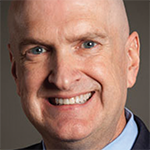
Image Credit: Michal Ludwiczak/shutterstock.com
A recent article in Health Affairs found that patients’ out-of-pocket (OOP) responsibility for office visits has gone up following implementation of the Affordable Care Act. The researchers found the sum of all copayments, coinsurance, and deductibles increased by 3% or more. Deductibles rose an average of between 7.9% and 9.5% for new and old patients, respectively (Health Affairs. 2015;34:1220-1224).
Explore This Issue
October 2015The rise in these types of expenses brings about a new concern for many practices: how to manage patients who aren’t able to pay.
“We are in a very different time,” said Rick Gundling, CMA, vice president of healthcare financial practices at the Healthcare Financial Management Association. “We talk a lot about the health exchanges having high deductibles, but even employer-based plans are increasing their deductibles to help manage costs.”
At one time, if a practice had to discuss financial concerns with a patient, it was only to tell him that he needed to come up with a $20 copay or a $100 deductible. Now, the entire payment for a procedure or other intervention may rest on the patient’s wallet. “These changes are making it harder for patients to get the care they need and for the practice to get paid for it,” said Owen J. Dahl, MBA, an independent consultant with the
Medical Group Management Association in Englewood, Colo. “This is becoming an issue that physicians and practice administrators seriously need to think about as part of their everyday practice.”
Develop Financial Responsibility Policies
As a practice begins to face some of these issues, it becomes increasingly incumbent on its members to develop a written policy focused on sitting down with patients very early in the process to make sure they understand all of the costs they are responsible for—not only those within the individual otolaryngology practice, but also any additional expenses such as lab work or expenses from hospital or outpatient surgery centers.
“I think practices need to be sensitive to the fact that this may be first time a patient has had their benefits explained to them instead of being some abstract idea on a website,” said Gundling. “They are told the out-of-pocket amount and immediately say that they have insurance. Well, yes, but they still have to pay their deductible and copayment amounts. That can be a shock.”
 Most otolaryngology practices are smaller and may not have either the financial or administrative structure to extend much credit in-house. The first question is, what can the practice afford to do to help out patients? —Richard Gundling, CMA
Most otolaryngology practices are smaller and may not have either the financial or administrative structure to extend much credit in-house. The first question is, what can the practice afford to do to help out patients? —Richard Gundling, CMAConfirming that the patient completely understands all of his or her expenses before treatment starts is best for the patient. No one wants to be surprised with an unexpectedly big bill. It is also good for the practice, because the patient experience is often better, and the practice is more likely to collect payment from a patient who knows what his obligations are.
Options for Payment
After the financial impact news is given, the practice needs to be able to offer suggestions on ways the patient can manage the outlays. “One of the easiest [ways to collect payment] is to offer a discount for cash,” said Dahl. “This helps the patient financially, the practice gets the money up front, and there are no collection costs.”